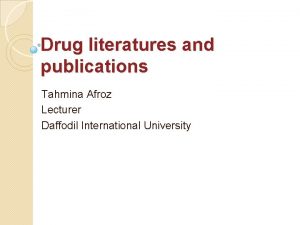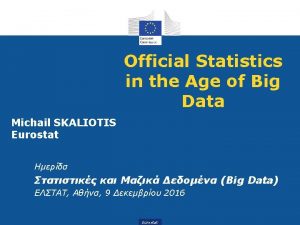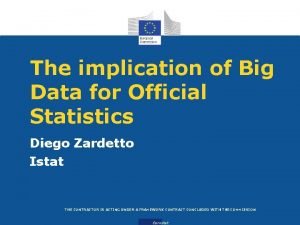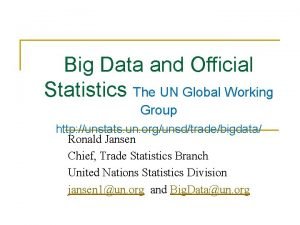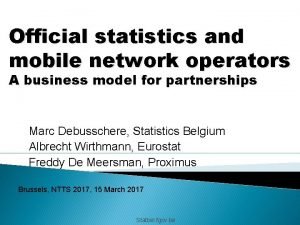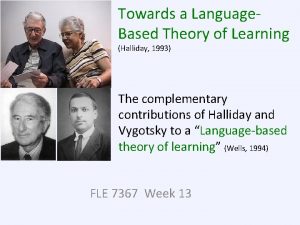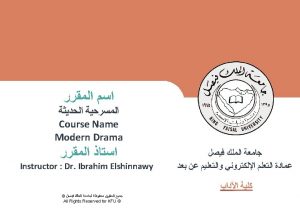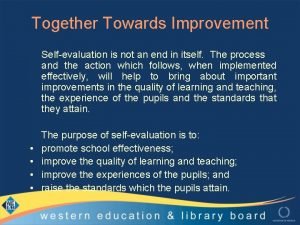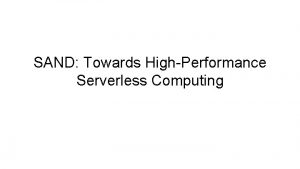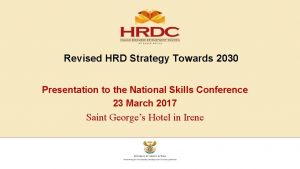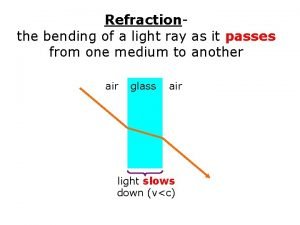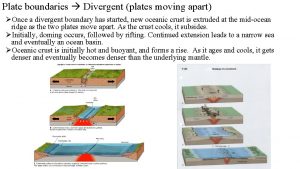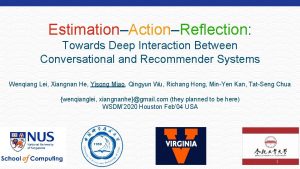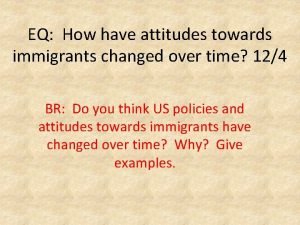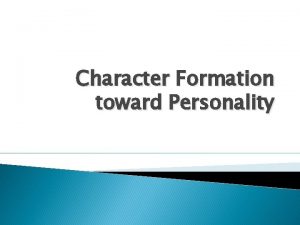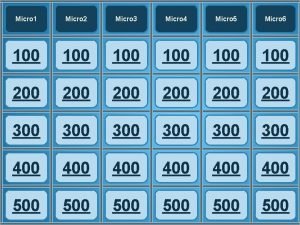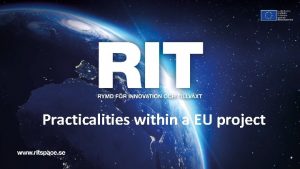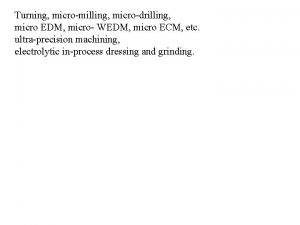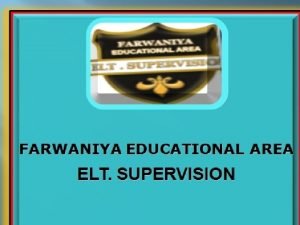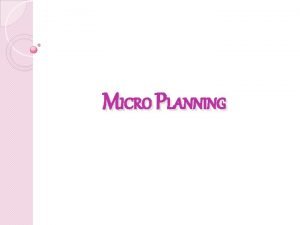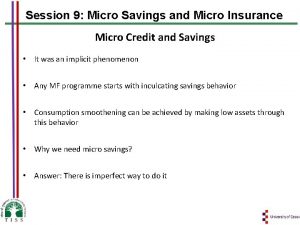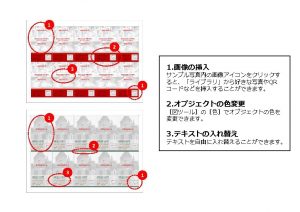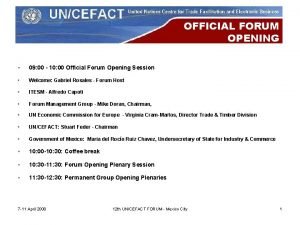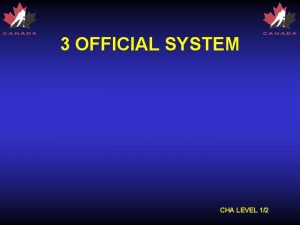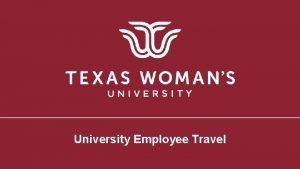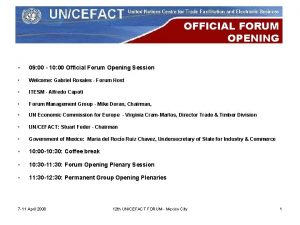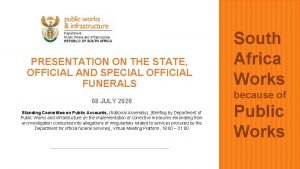PRACTICALITIES TOWARDS ACCESS TO MICRO DATA FROM OFFICIAL



















- Slides: 19

PRACTICALITIES TOWARDS ACCESS TO MICRO DATA FROM OFFICIAL REGISTERS: THE NORWEGIAN MODEL by Nicolás J. I. Rodríguez & Arild Mellesdal

The Welfare State and Demand for Administrative Data 1. 2. 3. 4. The modern welfare state have resulted in a huge amount of data in the post-war era. Total amount of expenditures to health, care, social security and welfare benefits increased from 59 billion NOK in 1980 to 311 billion NOK in 1999. Also a demand for planning and research on how the public administer their services and how the users utilize the system. National Insurance Act 1966.

Introduction of a personal identification number 1. 1964. 2. A unified system made it easy to combine information from different official registers. 3. Possible to assemble research datasources on a microdata level for individuals. 4. Also at the core of the critique of the introduction of the personal id and also a growing awareness regarding privacy issues.

Using data from official registers for research purposes 1. Not straight on using data from official registers in a research context. 2. Collected for administrative purposes without considerations regarding methodical problems. 3. A lot of work ensuring data quality of each of the official registers. 4. Administrative procedures are different from different fields, update routines are different and the dating of data might be different.

Research infrastructure and practicalities in accessing data 1. Many of the official registers deliver data to Statistics Norway, because of their central role as a national statistical bureau. 2. Statics law emphasize that the main purpose of Statistics Norway is to provice official statistics to the public and the state administration. 3. Statistics Norway has a legal right to access administrative data system in the state administration and national organizations in order to use them to produce official statistics. 4. The administrative organs have the duty to inform Statistics Norway on the establishment of new and larger administrative data systems in order that essential datasources for the production of statistical information are covered and shaped accordingly to this aim.

The Norwegian model: Four ways of organizing access to microdata from official registers a) The main part of the Norwegian model. Transfer of data from Statistics Norway to Norwegian Social Science Data Services. Based on agreement. A dualistic way of organizing data access. b) Trusted institution, which is a third party, delegated authority to handle datasources on the basis of a license. Such a trusted institution could be NSD. c) Primary datasource, the official register, delivers the datasource to a second institution that has a research infrastructure. This is based on either agreement or explicite regulation in connection with a legal framework. Such a datakeeper institution could be NSD. d) Some official registers maintain their own services where data can be ordered directly from the official register. This practice is usually based directly on a regulation. In these instances NSD could function as a guide providing an overview to a user on how to access the datasource.

A) Cooperation between SN and NSD 1. NSD founded in 1971 by the political sociologist Stein Rokkan. 2. 30 years of co-operation. Based on an agreement between SN and NSD. The new agreement from 1999. 3. Dualistic system. 4. Important in the Norwegian model is the distinction between identified data, de-identified data and anonymous data.

Identified data ”Identified data are individual records with name, address and / or identification number for a person or a firm (unit), and some information connected to the unit (variables)”.

De-identified data ”De-identified data are individual records with no identification information on each unit, but with so many detailed variables connected to the unit that somebody may identify some of the units. De-identified data can also be tables where outliers may be identified (disclosure)”.

Anonymous data ”Anonymous data are individual records modified in order to minimize, in accordance with current best practice, the risk of identification of a unit. Tables where information on outliers is modified are also anonymous. In order to make a dataset anonymous from a de-identified dataset there may be a need to remove information on the profession of the individual, aggregate the place of residence to a higher level or completely remove resident information. ”

Data access 1. They have to present a written application that describes the aim of the project. 2. A detailed list of the datasources they want to use and a detailed list of variables that they want to use in the project. 3. Specify how they want the data to be selected and organized. 4. Size of the sample or details regarding how the sample should be constructed. 5. Description of what type of data format they prefer. 6. Copy of license from the Data Inspectorate and other permits given from datasource owner.

B) Trusted institution 1. Use of different datasources linked together from different administrative fields. 2. A third party can be appointed as a data institution to handle the linking of different datasources. 3. Researcher receives an enciphered dataset and there are no personal information as name or personal identification number available here. 4. The key and identification of the datasource archived at the third party institution.

C) Database manager institution 1. Datasource administered by the infrastructure organization itself. 2. Based on agreement between the dataowner of the administrative register and the infrastructure organization.

D) Special official register 1. Cancer Registry of Norway. 2. Medical Birth Registry. 3. Statutory regulations controlling access to the registers.

Distributing microdata from official registers between nations 1. In general very restrictive. 2. Comparative advantages. 3. Directive 95/46/EC article 25. 4. SN permit only anonymous data. 5. Only transferred to countries that fulfill the requirements of article 25.

Towards guidelines for producing anonymous datasets: Why? 1. Crucial to ensure data access and privacy standards. 2. Direct access vs. remote access. 3. Exchange. 4. Data quality vs. privacy. 5. Proposal for guidelines.

Access to microdata: Challenges The FD-Trygd has been a formidable success. The demand for this kind of microdata for both planning and research needs has developed steadily. However: • This has strained the capacity of data access - invoking a need to further develop the infrastructure. • There is a need to scale up the data services to meet data demands in an efficient manner. • This includes restructuring documentation, and special designated web pages for metadata and procedures of microdata access for researchers. • New sufficient funding is needed. • The complexity of microdata and privacy issues will always be a challenge.

Access to microdata: Challenges 6. Ensuring a democratic data access through checks and balances. 7. This means proper infrastructure organisations (the Norwegian model) and free access to data.

Conclusion 1. There is a need for a higher level of integration between owners of primary datasources, statistical organisations and the research community. 2. Data archives should maintain a strong role and position in serving the research community in questions of microdata. 3. Data archives are specialized research infrastructure that are shaped for the purpose of handling a wide range of data and maintain a direct communication, providing data services to the research community and securing documentation of datasources. 4. The citizens should trust that information about them are handled in such a way that the result is published in a scientifically and anonymous manner.
 Official compendia in pharmacy
Official compendia in pharmacy Big data official statistics
Big data official statistics Big data official statistics
Big data official statistics Big data official statistics
Big data official statistics Official statistics from mobile phone data
Official statistics from mobile phone data Terminal access controller access-control system
Terminal access controller access-control system Terminal access controller access-control system
Terminal access controller access-control system Halliday 1993
Halliday 1993 Savukku nora money
Savukku nora money Tone vs attitude
Tone vs attitude Together towards improvement
Together towards improvement Sand: towards high-performance serverless computing
Sand: towards high-performance serverless computing Hrdsa
Hrdsa Light bending towards the normal
Light bending towards the normal Moving apart
Moving apart Esdnl status central
Esdnl status central Towards deep conversational recommendations
Towards deep conversational recommendations How have attitudes towards immigrants changed over time
How have attitudes towards immigrants changed over time Towards a theory of transcultural fandom
Towards a theory of transcultural fandom Character formation
Character formation
